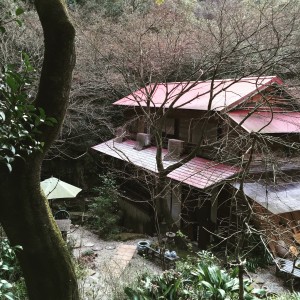
The Soybean flour café is a small café and antique shop near my friend’s house in Kasugai, about an hour from the centre of Nagoya. I’ve been there a few times to browse among the antiques and drink coffee by the waterfall.
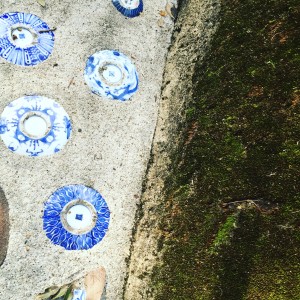
On my last visit in February this year, among the second hand clothes and old ceramics, I found a two piece outfit, made from old kimono material and painted silk. It is Western in style, a skirt with an elasticated waist and a jacket with a shirt collar, and it fitted me, unusually for Japan where shopping is frustrating for a tall long limbed woman. (So many beautiful clothes forever out of reach!) It seemed as if it had been waiting there for me.
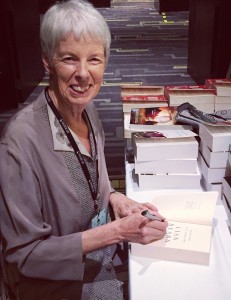
The first piece of clothing I bought in Japan was one of those padded winter jackets called hanten. In midwinter when I was there it seemed everyone was wearing them, both in the house where I was staying and in TV dramas. I desperately wanted one. I bought mine in Narita from the tiny shop where it was hand made, but I had to buy a man’s one as the women’s sizes were all too small. I still wear it in the winter – 22 years later. My other Japanese jacket is 10 years younger, also a man’s size and style, again bought in winter. Because of this jacket and my height I am often mistaken for a man, and it seems to symbolise the way I feel in Japan – hovering between male and female, west and east, even between young and old. I fall out of the categories I usually dwell in and this is a great freedom, not a bad place for a writer to live.
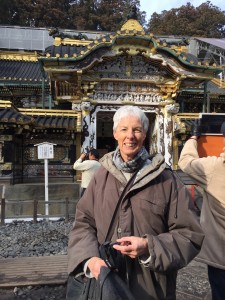
I seem to be always dressing up in Japan. At first I was reticent, but then I realised it’s part of the experience of travel, adopted enthusiastically by Japanese tourists: a court lady of the Nara period in the Osaka history museum; a stage hand in the kabuki theatre in Uchiko, straw hats for an Edo period style boat ride on the Shimanto river, a glorious red kimono in Wakamatsu-Aizu castle. A few years ago I visited the Yokohama Silk Museum, and found myself being dressed in one of the most beautiful kimono I have ever seen – the whole procedure was carried out by two dressers and took a long time. Taking the kimono off and giving it back, was surprisingly painful. I still yearn for it and for the person I briefly was in that attire.
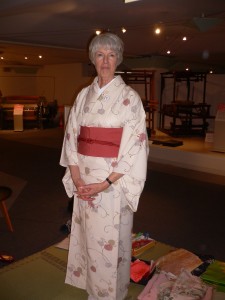
When staying at traditional inns, like everyone else I put on a yukata after the bath (though I usually change back into pajamas to sleep, but then so do many of my Japanese friends.) Each time I get a little inkling of a way of life very different from the one I was brought up in. The cut of the fabric, its texture, its smell, all transport me to another world, the one I try to recreate in my books. Walking on old roads, being in ancient forests, visiting remote temples are all part of a similar desire, to feel on my skin and in my bones, the same breeze, the same sunlight, rain and snow, that my characters would have felt in that imaginary world, hundreds of years ago.

Japan is the home of cosplay: even construction workers dress up.
http://www.awesome-robo.com/2012/08/tobi-art-of-japanese-construction-wear.html
Yet their distinctive tobi pants are said to derive from 19th century European knickerbockers. If you feel like playful fantasy your choice is endless, from maid cafes in Shinjuku to Shinsengumi restaurants in Kyoto, Inspiration is drawn chaotically, promiscuously, from within Japan and from all over the world while year round, festivals proudly display traditional masks and costumes, like the ones that inspired The Tale of Shikanoko, dating back centuries. There’s a richness in all this cultural cross-fertilisation which is far removed from narrow concepts of cultural appropriation. My books, I like to think, resemble my garment from the Soybean Flour Café, made from old Japanese material, cut in a Western style, a unique hybrid.
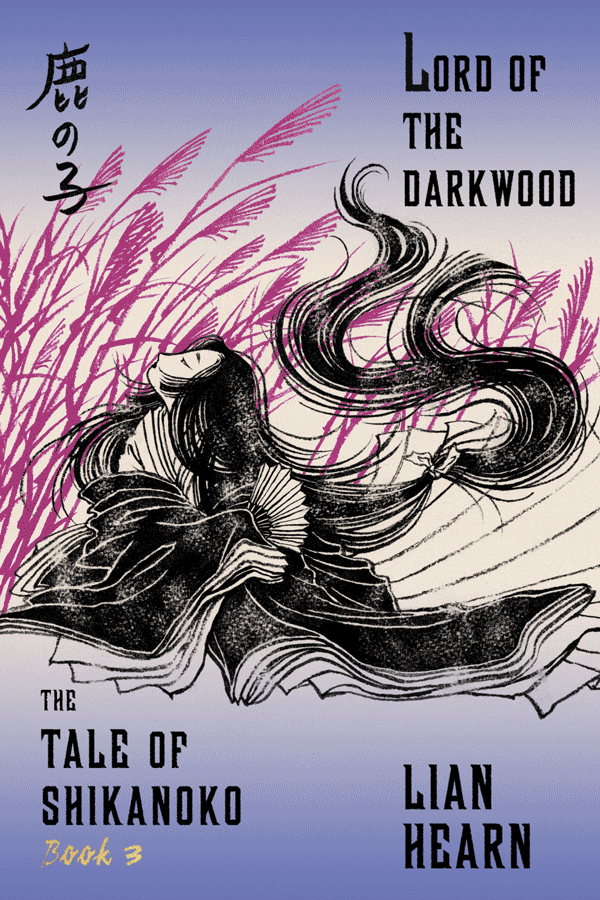


6 Responses
A Laurie LaMont
Absolutely love your Otori clan series of books. It is like a trip back in time to feudal Japan. Your writing style and immersion of the reader into the lives of your characters reminded me of Arthur Golden’s riveting novel, Memoirs of a Geisha. I look forward to discovering your other novels.
Lian Hearn
Thanks for your very nice comment. I also loved Memoirs of a Geisha. I hope you enjoy the new series.
Tony Wall
Everytime I see a book placed in japan I want to read it. I am reading the “Emperor of the Eight Islands” by yourself. I shall also try to find in the West Austrailan Library sytem the “Tales of the Otori” I like your books and hope to see more.
sincerely Tony Wall
Lian Hearn
Thanks so much.
Mihaela Serbulea
Thank you for your wonderful writing! I enjoy the Otori series tremendously (found the AtNF at the library and purchased the next two). It is difficult to put the book aside and go on with the day 🙂
It would be great if we could meet one day – I live in Yokohama and walk the Old Tokaido – was even imagining that we might cross paths by chance. If you don’t mind, please let me know when you next come to Japan. Thank you, Mihaela
Lian Hearn
Hi Mihaela, thank you for writing – I’m so glad you have enjoyed the books. I just had a little daydream of being in Japan and meeting you in Yokohama. Maybe when this world crisis is over that will happen. I was in Japan last year, and had hoped to come back quite soon. I hope you stay safe and well